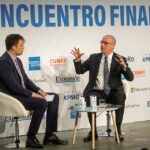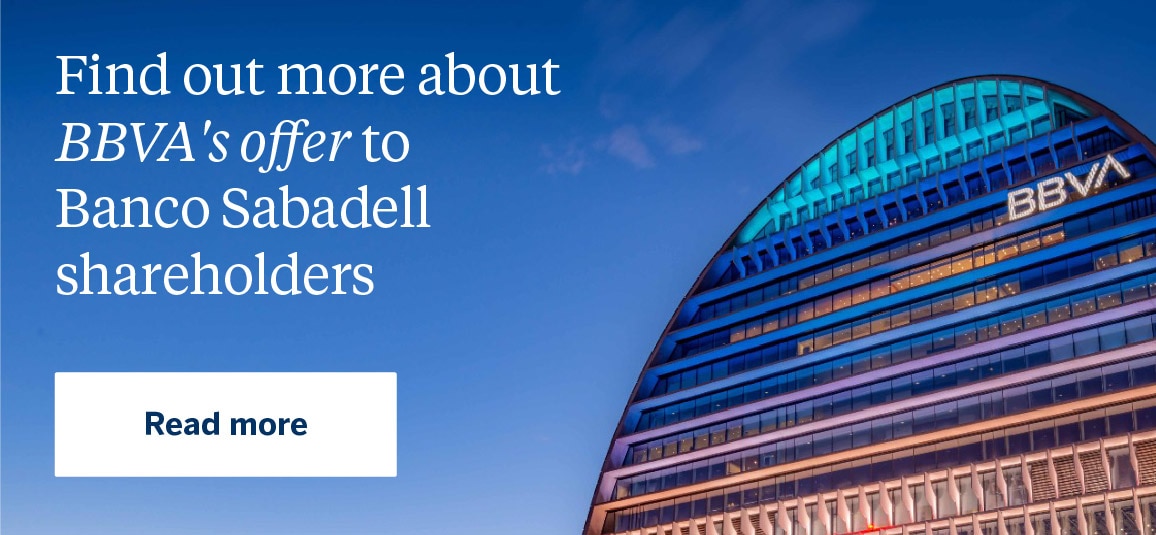Onur Genç (BBVA): “We are doing this transaction to boost lending, particularly to SMEs”
BBVA’s CEO Onur Genç remarked on Monday that the integration of BBVA and Banco Sabadell will be beneficial to Spain and its economy, and made a point of emphasizing the bank’s “firm commitment to SMEs.” According to Genç, this integration will enhance lending to small and mid-sized companies (SMEs). “We are doing this transaction to boost lending, particularly to SMEs,” he stated while taking part in the 15th Financial Forum organized by Spanish newspaper Expansión and KPMG. “It wouldn’t make sense to carry out this transaction to reduce the segment we value the most at Banco Sabadell,” he added.

This will result in “a stronger, more efficient bank” with a greater lending capacity, estimated at €5 billion per year, he recalled. In this regard, far from reducing available credit to small and mid-sized companies, this transaction seeks to increase it. In fact, only 1.5 percent of the SMEs in Spain work exclusively with BBVA and Banco Sabadell, based on the definition of these kinds of companies by the Bank of Spain. In Catalonia, the figure is 3.6 percent of SMEs. “We will continue to serve all of them,” he said.
In terms of the possible impact of the transaction on BBVA’s business in Spain, the CEO announced that as of September this year, the bank has added nearly one million new customers in Spain, including over 100,000 self-employed individuals and SMEs. This represents 5.8 percent growth year-over-year in this segment.
Onur Genç clarified that the recently announced adjustment of the exchange “is neither an amendment nor an improvement of the original offer.” Banco Sabadell shareholders who accept the offer will receive one BBVA share for every 5.0196 shares they own, and a cash payment of €0.29. According to the stipulations of the May 9th offer, it is “a purely automatic adjustment to neutralize the impact of the dividend payment on the exchange ratio. The value is the same,” he stressed.
The CEO recalled that with this transaction, BBVA seeks to gain scale in an attractive market for investment, like Spain, as well as in Europe. The fixed costs in technology driven by the exponential digitization of the sector are forcing banks to grow in size to be efficient. In one year alone, BBVA invests €3 million in technology, €1 million of which is for Spain.
Therefore, the transaction follows a very clear financial rationale: creating €850 million in cost synergies annually, mainly from savings in technology. He also mentioned the complementarity of both banks’ businesses as “something that is highly positive because it gives room to grow.” Sabadell focuses on SMEs, while BBVA has a strong presence in the retail banking and corporate clients.
Onur Genç feels that the best indication that this transaction does not raise doubts is the support of the shareholders at the Extraordinary General Shareholders’ Meeting, where 96 percent voted in favor. In this regard, he explained that the strong correlation between BBVA and Banco Sabadell share prices is a reflection that the offer is strong and supports Sabadell’s value. “This is a textbook transaction. It is ideal for everyone,” he concluded.

BBVA is collaborating and engaging in dialogue with the CNMC and other authorities
Onur Genç explained that BBVA “has been collaborating, and engaging in dialogue with the CNMC since the case was first presented.” In terms of the timing of the approvals, he underscored that the CNMC is a highly rigorous agency. “There is a public debate that goes beyond our intentions. We have to let the process run its course,” he said.
Regarding when the CNMC could approve the transaction with Banco Sabadell, he reiterated that “we maintain our conviction that there are no competition issues, and it is a Phase 1 transaction.” BBVA bases this statement on several points, using the methodology applied to prior transactions: the market share of the combined bank (22 percent in lending; 20 percent in deposits; 17 percent in branches); the fact the the resulting bank would not be the largest (it would be second behind CaixaBank); and that it would not surpass the thresholds established by the EU competition guidelines (market share of 25 percent for the combined bank, or an increase of 10 percent in market share). “The law specifies that Phase 2 only applies if there is a competition issue. We do not believe there is,” he stressed.
“We maintain open dialogue with all the authorities involved in this process (CNMV, CNMC, ECB, Bank of Spain, and the government),” Onur Genç said. “We are cognizant of the concerns being raised. As we have said on multiple occasions, we are very willing to cooperate with the government to address any of these concerns, as we have done in the past,” he added.
BBVA México “is unique”
Onur Genç reiterated that “our outlook for Mexico remains strong and stable.” He also referred to the “short-term volatility in recent weeks” due to the change in government, but called for “patience and observation of the economic policies the new administration implements.” In the long-term, he feels that “the best part about Mexico is its proximity to the United States, one of the largest markets in the world.” In addition, Mexico is an economy with low penetration of financial services, with ample room for financial leverage.
“We have a wonderful bank in Mexico,” that he feels will continue to provide strong results and outperform competitors by taking advantage of the strengths of the franchise. “What we have in Mexico is unique,” he said.
